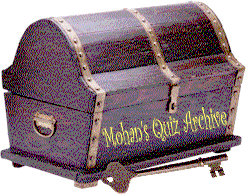Answers to CICS / DB2 questions
1. What is transaction routing?
Transaction routing facility allows the terminal connected to a local system to run remote transactions which are owned by the remote system.
2. What is automatic journaling?
The CICS Journal Control program will write the recovery information for a recoverable resource into a journal file automatically for facilitating the recovery. This process is called automatic journaling. For this the journal file must be identified by a journal identifier and must be defined to the Journal Control Table.
3. How and where is the SQLCA specified in a DB2 - COBOL program?
In the Working-Storage section using SQL INCLUDE statement.
4. Why should you use a UNION instead of a JOIN?
A join depends on the common values of the columns named in the search condition. If there are no common values, there would be no way to combine data from two tables. If we need to fetch all the rows from two tables or more (even without common values), UNION is the only way. UNION returns rows from all the underlying tables.
5. What is the difference between a '%' and '-' when used with the LIKE keyword in a SQL query?
A '-' represents a single unknown character, while '%' represents from 0 to any number of characters.
6. What are the three ways in which the CICS system can be started?
Warm, Cold and Emergency start.
7. What is the purpose of CICS BIF DEEDIT?
To remove all characters other than digits from an alphanumeric field. Remaining digits will be right-justified and padded with zeroes as necessary.
8. How can the use of the same TDQ by different users prevented?
By issuing an EXEC CICS ENQ against the resource and after completing the process issue a DEQ command to free the resource.
9. What does it mean when EIBCALEN is zero?
When the length of the communication area (EIBCALEN) is equal to zero, it means that no data was passed to the application.
10. Is there any referential integrity defined between the tables in QMF?
QMF does not make use of the DB2 RI in its management of data content in the object control tables. RI is handled in the application.
11. What is the difference between smallint and Integer?
A smallint datatype is 2 bytes long and has a range from -32768 to +32767. An integer is 4 bytes long and stores numeric data ranging from -2147483648 to +2147483647.
12. What is a 'nonleaf' page?
This is a page that contains keys and page numbers of other pages in the index. Nonleaf pages never point to actual data.
13. What is cursor stability?
It is cursor stability that tells DB2 that database values read by its application are protected only while being used. Changed values are protected until the application reaches a commit point.
14. When a second READ WITH UPDATE is given against the same file in the same task prior to releasing the file, what will happen?
An INVREQ will occur.
15. What is the function of the Base Locator for Linkage (BLL)?
BLL is used to address storage outside the working storage section of the application program. A set of BLL cells is also known as the parameter list. It is not used explicitly in COBOL VS II.
16. In which CICS table, the length of the Task Work Area is specified?
Program Control Table (PCT).
17. What does DB2 EXPLAIN do?
EXPLAIN obtains information like which indexes are used, whether sorting is necessary, which level of locking is applied, etc. (basically the execution of SQL statements in the DBRM) and will put all this information into the ID.PLAN_TABLE where ID is the authorisation ID of the owner of the plan.
18. How can an application release main storage acquired by the GETMAIN command?
By coding a FREEMAIN command with the data or by using the SYNCPOINT command.
19. What is DCLGEN?
DCLGEN (Declaration Generator) is a facility that is used to generate SQL statements that describe a table or a view. The table or view declares are used by DB2I utility DCLGEN to build a host language structure.
20. What are the mapset, map and field definition macros?
DFHMSD, DFHMDI and DFHMDF

